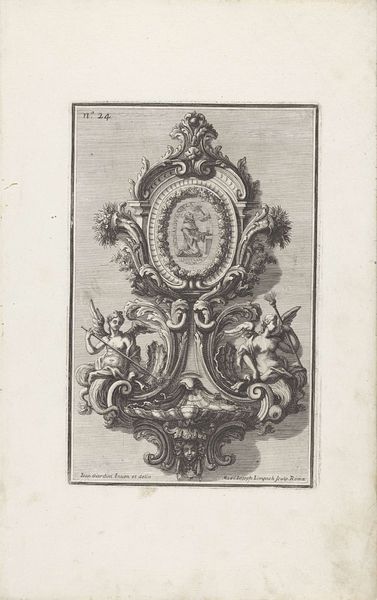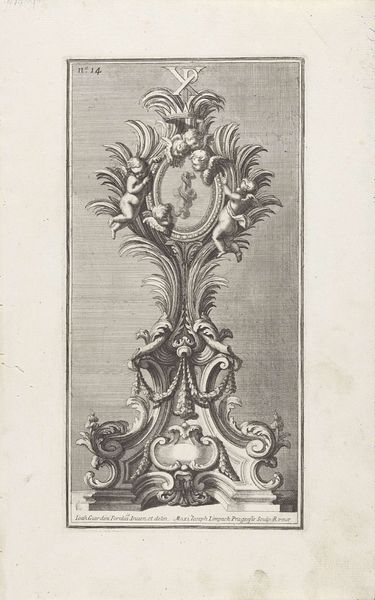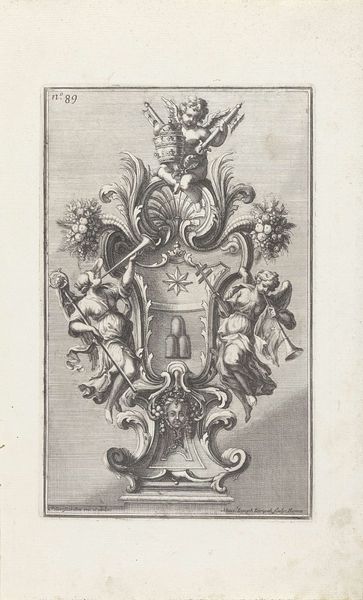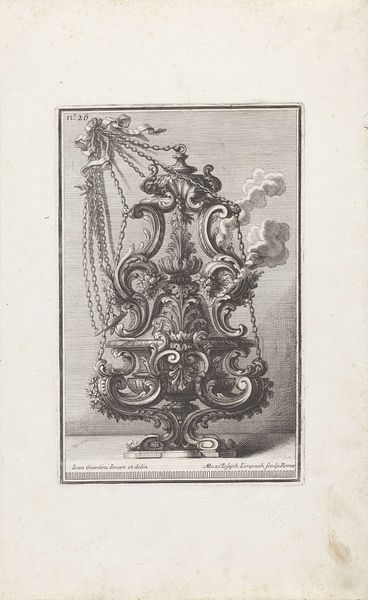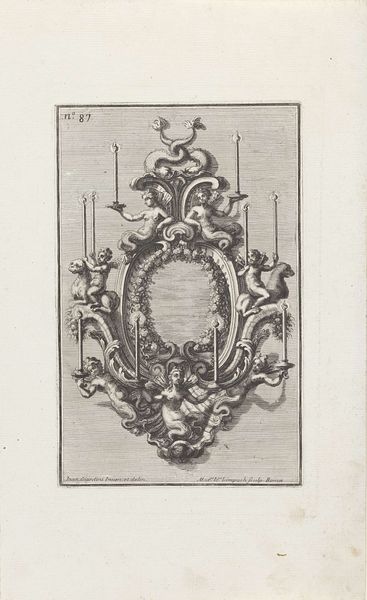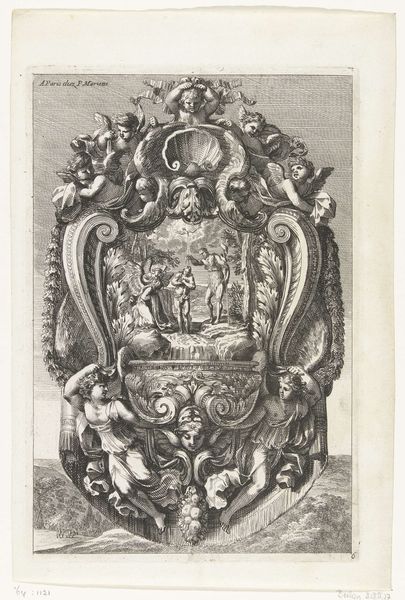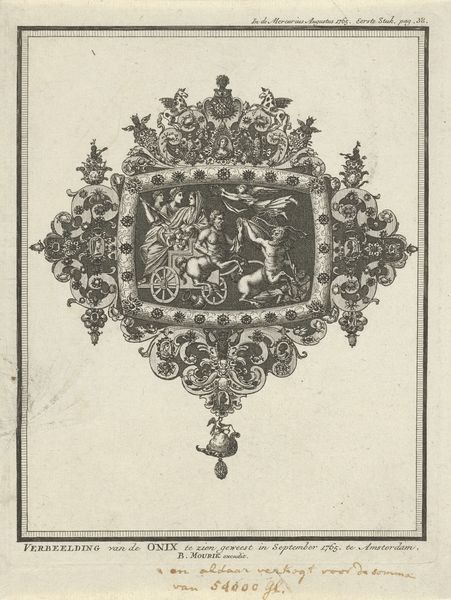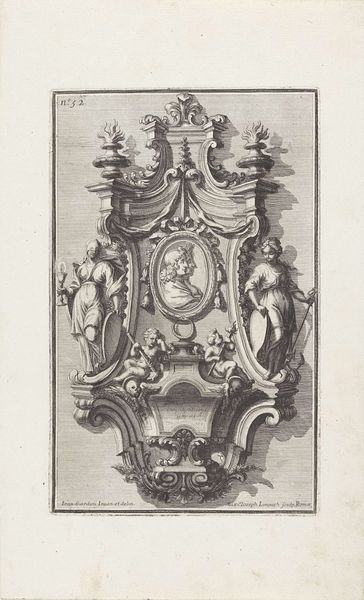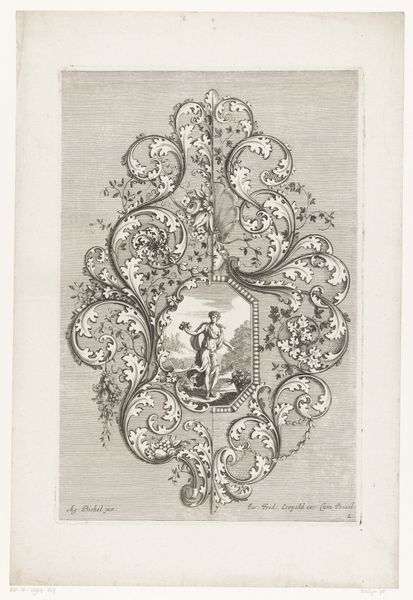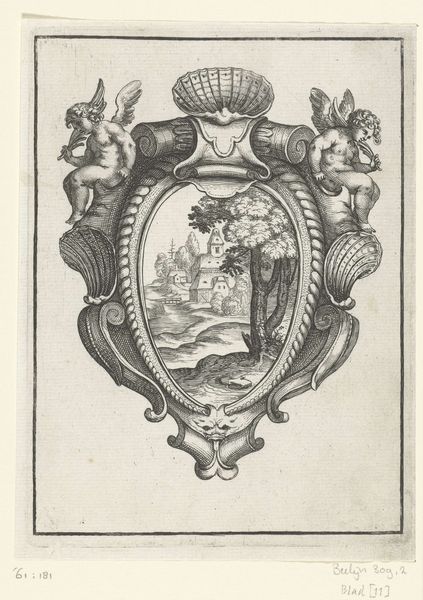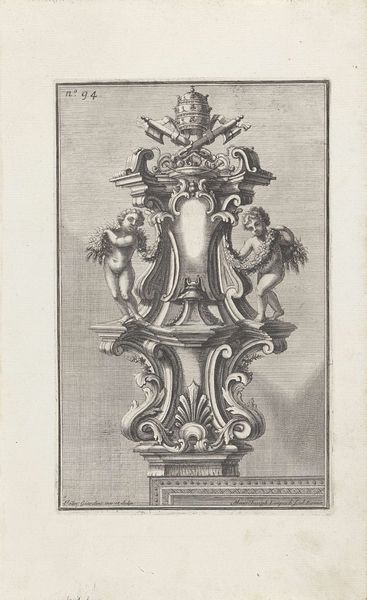
Ornament met het wapen van Paus Clemens XI en een putto op een globe, geflankeerd door bomen en hoorns vol bloemen en vruchten 1714
0:00
0:00
ornament, engraving
#
ornament
#
allegory
#
baroque
#
old engraving style
#
engraving
Dimensions: height 275 mm, width 174 mm
Copyright: Rijks Museum: Open Domain
Editor: This engraving, created in 1714 by Maximilian Joseph Limpach, is called "Ornament with the Coat of Arms of Pope Clement XI and a Putto on a Globe." The crisp detail in the monochrome printwork is incredible. I'm struck by how weighty and extravagant the piece feels despite the lightness of the cherubic figure perched on top. How do you unpack a design like this? Curator: It's like visual poetry, isn't it? A celebration of earthly and divine power intertwined. Consider the era: high Baroque, overflowing with symbolism and grandeur. That putto isn't just decoration; he represents divine authority resting upon worldly power, symbolized by the globe. The Pope's coat of arms, proudly displayed, reinforces that idea. Editor: The composition seems meticulously arranged. It’s like every element is in dialogue. Curator: Precisely. Notice how the robust forms of the cornucopias, brimming with fruits and flowers, contrast with the architectural severity of the base. It is an interesting contrast, a deliberate artistic tension. What message do you think the artist is conveying with these symbols? Editor: Maybe a commentary on the abundance and global reach of the Church at that time? And the base representing, like, the foundations upon which all that is built? Curator: Exactly! But remember, art never offers simple answers. The cherub, despite his importance, appears almost playful. It introduces a hint of ambiguity, doesn’t it? A question perhaps. I wonder what this image would have represented to people when it was made. Editor: That makes me think about its modern-day resonance. What do we make of that image of power today? I really appreciate that push for consideration! Curator: Agreed, understanding context unlocks another level of engagement. Art becomes a mirror reflecting both the past and our present selves.
Comments
No comments
Be the first to comment and join the conversation on the ultimate creative platform.
